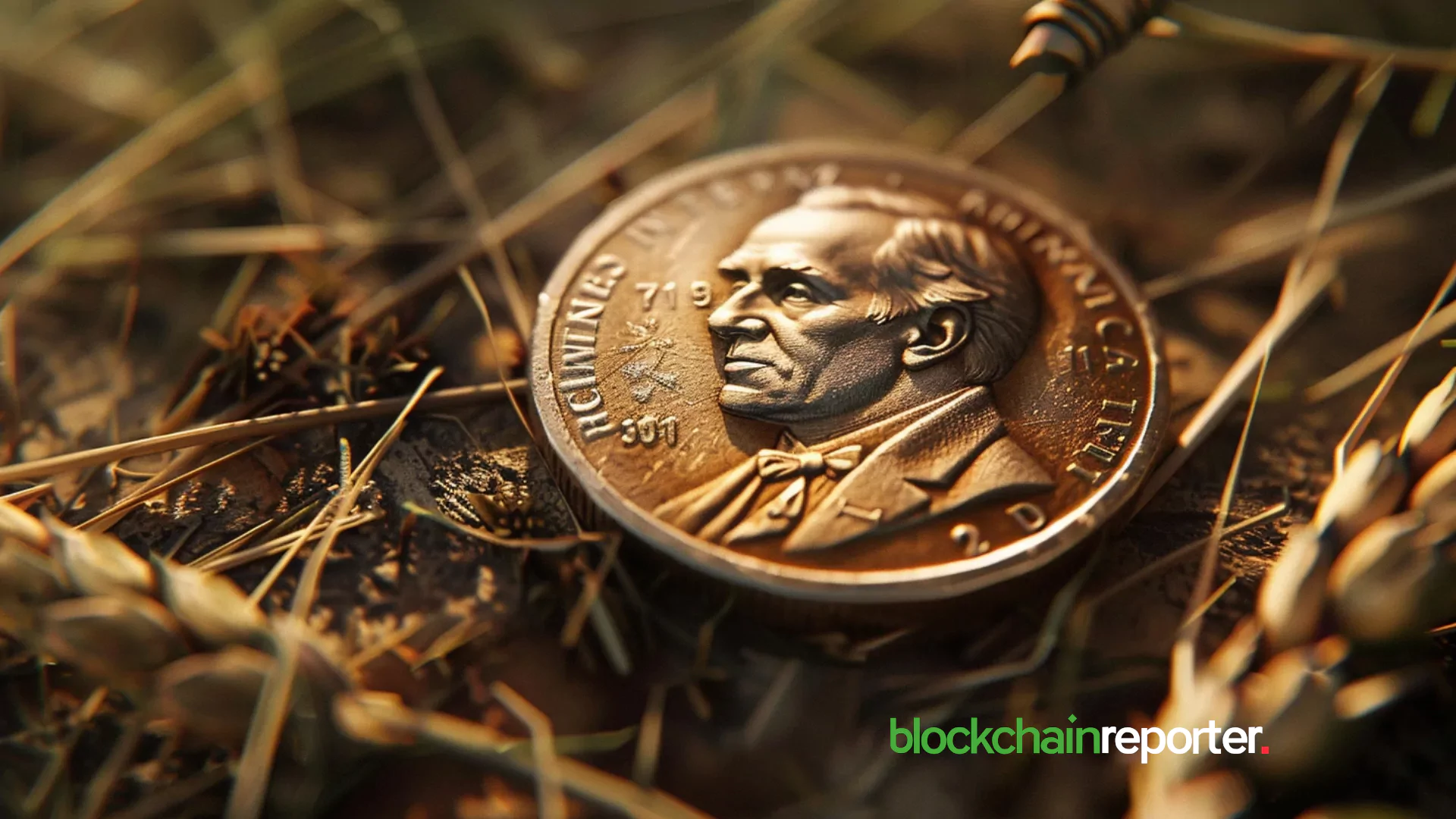
The 1944 Lincoln Wheat Penny embodies a rich tapestry of American history, numismatic charm, and the unforeseen quirks of minting errors. As a pivotal year in the realm of United States coinage, 1944 marked the resurgence of copper in the minting of Lincoln cents, a response to the public’s disfavor towards the previous year’s zinc-coated steel composition.
The transition back to copper, though born out of necessity due to wartime metal rationing, set the stage for one of the most ubiquitous yet fascinating coins in American numismatics. This article delves into the multifaceted story of the 1944 Wheat Penny, exploring its historical context, design intricacies, and the myths that surround it, while also unraveling the factors that contribute to the 1944 Wheat Penny value today.
From its conception amid the backdrop of World War II to the discovery of highly sought-after minting anomalies, the journey of the 1944 Wheat Penny offers a compelling glimpse into the past and an engaging quest for collectors and historians alike. Let’s uncover the history, facts, and myths surrounding this iconic piece of Americana, shedding light on why it continues to captivate the imaginations of numismatists and history enthusiasts worldwide.
What is the 1944 Wheat Penny?
The 1944 Lincoln Wheat Penny, crafted by Victor David Brenner, marked the reintroduction of copper into the Lincoln Cent series, a response to the unfavorable reception of the zinc-coated steel pennies from 1943. This year heralded a shift in the Lincoln penny’s composition, diverging from the pre-1943 blend of copper, tin, and zinc. Instead, the 1944 iteration was formulated solely from copper and zinc, as tin was scarce and subsequently omitted from the minting process for wheat cents from 1944 to 1946.
Remarkably, in 1944, the US Mint produced over 2.1 billion pennies, setting a record for the time and rendering the 1944 Lincoln Wheat Penny one of the most ubiquitous among its counterparts. This record stood until the minting of the 1960 Lincoln Memorial cents surpassed it. However, this record led to the coins’ rising worth as of today, making everyone interested in the 1944 Wheat Penny value.
History of the 1944 Wheat Penny
The 1944 wheat penny was introduced as the government’s response to the public dissatisfaction with the zinc-coated steel composition and silver-like appearance of the 1943 one-cent pieces. During 1943, as copper was essential for wartime efforts like artillery production, the government opted to conserve copper by manufacturing pennies with a steel core and a zinc coating.
However, these coins were unpopular due to their nickel-like appearance and propensity to rust when handled, leading to a swift return to copper in 1944. The 1944 return saw pennies composed of 95% copper and 5% zinc, effectively making them brass rather than the traditional bronze, as they contained no tin.
This change was well-received compared to the previous year when the War Production Board’s refusal to allocate copper for coin production resulted in the less popular zinc-coated steel Lincoln cents. This historical fact makes these coins popular as people are now interested in the 1944 Wheat Penny value.
Design of the 1944 Wheat Penny
Verifying the authenticity of a 1944 Lincoln cent involves examining several key characteristics. Start with the front (obverse) of the coin, which features the profile of Abraham Lincoln. The year 1944 should appear to the right of Lincoln’s image, accompanied by a “D” mint mark for coins from the Denver Mint or an “S” for those from the San Francisco Mint.
Pennies minted in Philadelphia will not display a mint mark. The term LIBERTY is inscribed on the left side, while the phrase IN GOD WE TRUST is positioned above. On the back (reverse) of the coin, you’ll find three important inscriptions: the denomination ONE CENT sits in the center, flanked above by UNITED STATES OF AMERICA and topped with the Latin phrase E PLURIBUS UNUM along the upper edge.
WWII “Shell Casing” Cents: Historical Truth or Myth?
The debate continues over whether 1944 pennies were indeed minted from recycled shell casings. Some dismiss the idea as a patriotic myth, believing it was merely a story for wartime morale. However, evidence suggests that the wartime surplus of copper, derived from recycled ammunition casings, was indeed utilized in the production of wheat cents, which also adds to the 1944 Wheat Penny value.
Renowned numismatic expert Roger Burdette points to National Archives records affirming this. These documents include accounts of train cars filled with used bullet casings being delivered to the Philadelphia Mint, substantiating the claims of their use in coin production.
1944 Wheat Penny Value
Despite the 1944 wheat cent having one of the highest production rates among pennies, various factors can elevate its value significantly, with some reaching into the five-figure range. Among all the Lincoln Wheat Pennies, the 1944 edition stands out as particularly sought-after by collectors, primarily due to its historical ties to World War II, marking it as a pivotal piece in numismatic collections.
This attraction from collectors is often referred to as numismatic value, which greatly hinges on the coin’s condition. A well-worn 1944 wheat penny might not fetch a high price, but a coin in pristine, mint condition can command a value of up to $13,000. However, there’s an even more valuable variant: the 1944 Steel Wheat Penny, which can be exceedingly valuable, akin to finding a treasure trove.
For collectors, the chase for the high-grade 1944 Wheat Pennies is fuelled by the knowledge that these coins, especially those in uncirculated condition, represent a dwindling resource. Over time, the number of high-grade coins diminishes due to wear, loss, or damage, making top-condition specimens increasingly rare and adding to the 1944 Wheat Penny value.
The 1944 Steel Wheat Penny, a product of the same year but an entirely different story, adds another layer to the 1944 narrative. As a striking error, these steel variants are the unicorns of the 1944 issues, anomalies that arose from the leftover blanks of the previous year’s steel coinage. Their rarity and the intriguing error behind their existence make them highly prized, with values that can soar based on their condition, rarity, and the historical curiosity they represent.
In the broader scope of numismatics, the value of the 1944 Wheat Penny encapsulates the intricate balance between rarity, condition, historical significance, and collector demand. As time marches on, these coins, particularly those in superior condition or with unique attributes like the steel composition, are likely to continue appreciating in value. They are not just pieces of copper or steel; they are fragments of history, tokens of an era marked by turmoil and transformation, and as such, they hold a special place in the hearts and collections of those who seek to preserve the tangible remnants of the past.
The 1944 Steel Wheat Cent
The saga of the 1944 Steel Wheat Cent is a captivating episode in the annals of American numismatics, illustrating not just a momentary lapse in the minting process but also the unforeseen consequences that can elevate a common coin to the status of a numismatic legend. These coins emerged as unintended artifacts from a time when the U.S. Mint was transitioning between wartime exigencies and peacetime norms, a period that necessitated swift adaptations in materials and procedures.
The presence of these steel planchets in the minting machinery was a remnant of the previous year’s efforts to conserve copper for the war effort. The accidental use of these steel blanks for the 1944 pennies created a stark deviation from the standard copper coins expected that year. This error resulted in the creation of a coin that was, in essence, a relic of two different eras: the steel composition harking back to the wartime economy of 1943 and the date marking the return to normalcy in 1944.
The rarity of the 1944 Steel Wheat Cent is underscored by its very existence—each coin serves as physical evidence of a historical anomaly, a fleeting moment where the past and the future collided in the hoppers of the U.S. Mint. As such, these coins have become highly sought after by collectors, not only for their scarcity but also for the story they embody: a tangible slice of history that reflects the tumult and transition of America during the Second World War.
Collectors and historians alike prize the 1944 Steel Wheat Cent, similar to the rising 1944 Wheat Penny value, for its unique position at the intersection of numismatic error and historical significance. It stands as a testament to the challenges and unintended outcomes that can arise from the complex processes of coin production, especially under the pressures of wartime demands. This transitional error, while a minor hiccup in the grand scheme of minting operations, has provided the numismatic community with one of its most intriguing and desirable anomalies.
Moreover, the hunt for the 1944 Steel Wheat Cent adds an element of treasure hunting to the hobby of coin collecting, as these coins are not only rare but also hold the potential for significant financial value. Their discovery in circulation, while exceedingly unlikely today, would be akin to finding a needle in an immense haystack—a prospect that continues to tantalize collectors and adds to the lore surrounding these exceptional pieces of metal.
The 1944 “Silver Penny”
The mistakenly produced steel coins from 1944, which were meant to be copper, exhibit a distinctive silvery appearance, earning them the nickname “Silver Pennies.” Despite their color, they contain no actual silver but are instead zinc-plated steel, similar to the 1943 issues. Today, fewer than 50 examples of these 1944 steel pennies are known to exist, placing them among the most elusive and prized coins.
The majority of these rare steel cents were produced by the Philadelphia Mint and lacked a mint mark. However, there are seven such coins with a “D” mint mark from the Denver Mint and two with an “S” from the San Francisco Mint, with the latter being considered the most scarce and valuable, like the rising 1944 Wheat Penny value.
Record-breaking auction sales have been seen for these coins: a 1944 Steel Cent from Philadelphia fetched $180,000; one from Denver went for $115,000; and a specimen from San Francisco reached an astounding $408,000. Interestingly, a similar error occurred in the previous year when some leftover bronze planchets were mistakenly used in 1943, leading to the creation of the highly sought-after and valuable 1943 Copper Penny.
The 1944-D/S Wheat Cents
The 1944-D/S Wheat Cents is a fascinating chapter in the saga of Lincoln Wheat Penny errors, encapsulating a peculiar instance of mint mark confusion that has since become a treasure trove for collectors. This unique error occurred when dies originally intended for use at the San Francisco Mint were repurposed and altered for use in the Denver Mint. The original “S” mint marks were mechanically removed and replaced with a “D,” but not without leaving behind faint, yet discernible, traces of their original identity.
This minting anomaly has created a niche but fervent interest among numismatists, who value the coin not just for its rarity, but for the story it tells—a story of wartime constraints, logistical oversights, and the intricate processes behind coin manufacturing. The presence of both “D” and “S” mint marks on the same coin serves as a tangible relic of the Mint’s adaptive strategies during an era of significant resource limitations.
Moreover, the valuation of the 1944-D/S Wheat Cents varies widely depending on their condition and the visibility of the overstrike. Collectors particularly prize specimens where the underlying “S” is clearly discernible beneath the “D,” as these provide the most direct link to this intriguing chapter in U.S. Mint history. These coins serve as a testament to the intricacies of minting technology and the challenges faced during their production.
The allure of the 1944-D/S Wheat Cents lies not only in their monetary value but also in their historical significance and the insight they provide into the coin-minting process. They underscore the fact that even seemingly small errors can lead to significant historical interest and financial value, encapsulating a moment of human error frozen in metal for posterity.
For collectors, the search for these coins, like the rising 1944 Wheat Penny value, is more than just a hunt for rarity; it is a quest for pieces of history, each with its own tale of error, correction, and survival through the ages. In the world of numismatics, the 1944-D/S Wheat Cent continues to be a symbol of the unexpected treasures that can emerge from the mints’ minutiae, offering a unique window into the past and a prized possession for the present.
Conclusion
The story of the 1944 Wheat Penny, a seemingly ordinary coin, unfolds a narrative steeped in wartime exigencies, numismatic allure, and the curious twists of minting fate. This coin’s journey from the pressing machines of the mid-20th century to the treasured vaults of modern collectors encapsulates more than just the tale of a piece of currency; it represents a slice of American history, a testament to the nation’s resilience and adaptability during times of turmoil.
From its inception as a necessity due to wartime metal rationing to its eventual status as a collector’s dream, the 1944 Wheat Penny serves as a bridge between the past and present, connecting generations through the shared heritage of numismatics. The coin’s varied tales—from the utilitarian shift back to copper to the extraordinary errors resulting in the rare and valuable steel variants—highlight the unpredictability and fascination inherent in coin collecting.
FAQ
What is the value of a 1944 Wheat Penny?
The value of a 1944 Wheat Penny can vary greatly depending on its condition, mint mark, and any unique characteristics. A standard 1944 Wheat Penny in good condition might fetch a few cents to several dollars, while rare variants, especially in uncirculated condition, can command prices in the thousands.
What is a 1944 Wheat Penny?
A 1944 Wheat Penny is a Lincoln cent produced by the U.S. Mint in 1944, notable for marking the return to copper coinage after the 1943 zinc-coated steel pennies. It features the iconic Lincoln profile on the obverse and wheat stalks on the reverse, symbolizing U.S. agricultural prosperity.
Why is the 1944 Wheat Penny significant?
The 1944 Wheat Penny is significant due to its historical context during World War II and its numismatic appeal. Its production involved the reintroduction of copper, utilizing metals from recycled ammunition casings, making it a symbol of wartime resourcefulness and a collectible piece of American history.
What makes some 1944 Wheat Pennies more valuable than others?
Some 1944 Wheat Pennies are more valuable due to rare minting errors, such as being struck on steel planchets intended for the previous year’s pennies, or having distinctive overmint marks like the 1944-D/S error. Their condition and rarity significantly influence their market value.
Are there any myths surrounding the 1944 Wheat Penny?
One common myth is that all 1944 Wheat Pennies were minted from recycled shell casings. While it’s true that some were made with metals from this source, not all pennies from 1944 share this characteristic. This myth contributes to the allure and mystique surrounding the coin among collectors.









